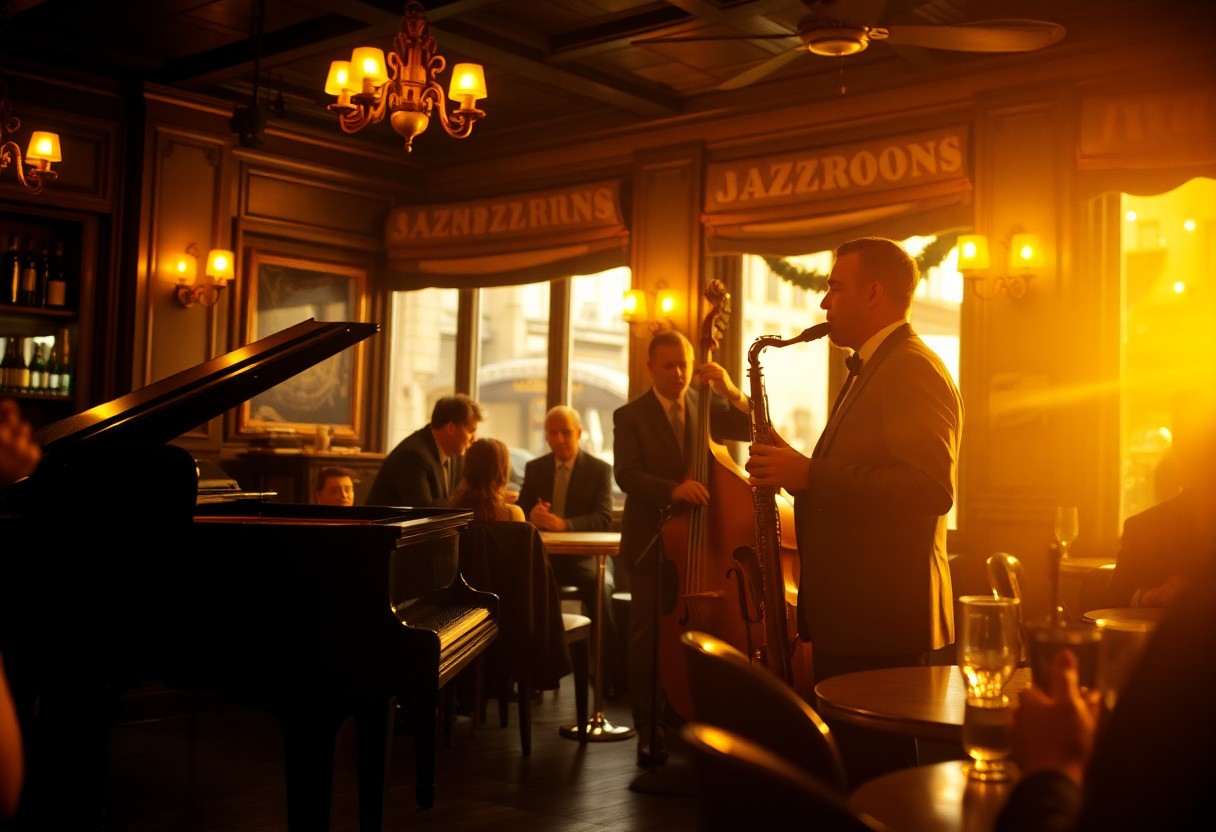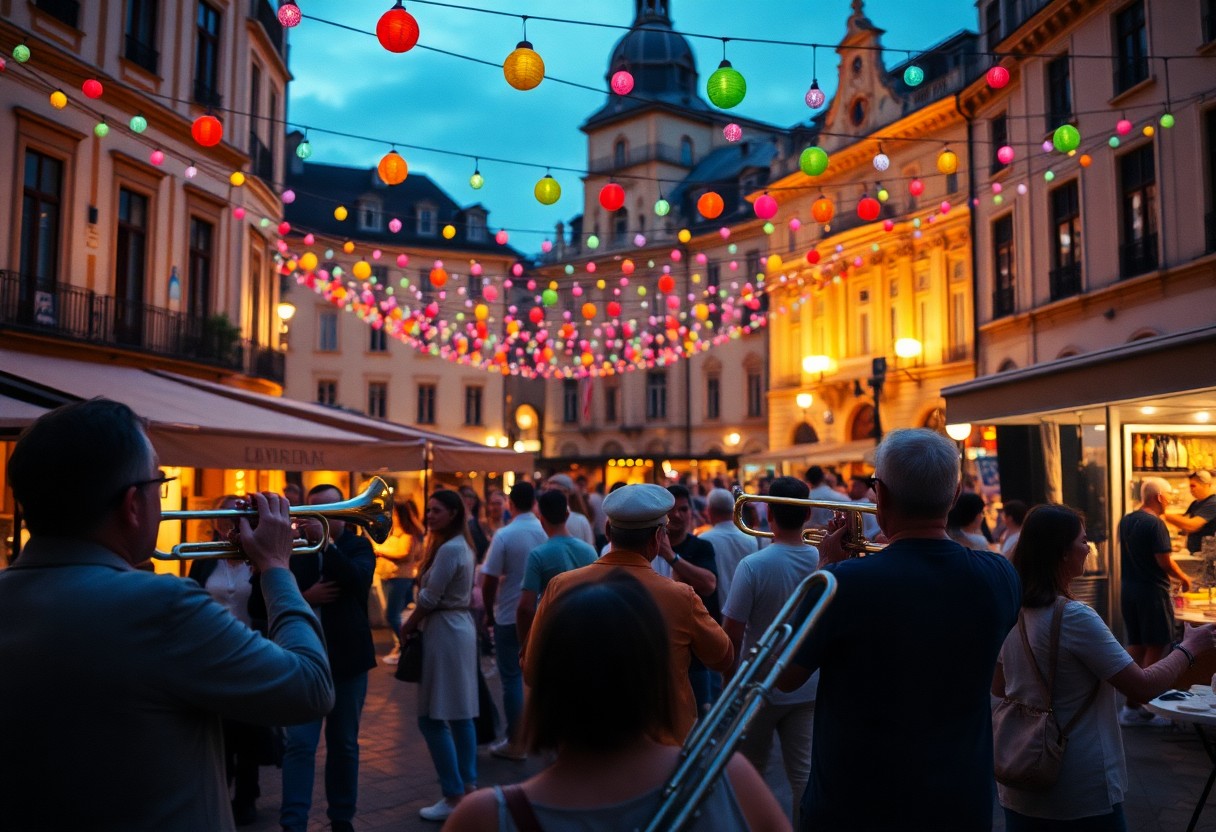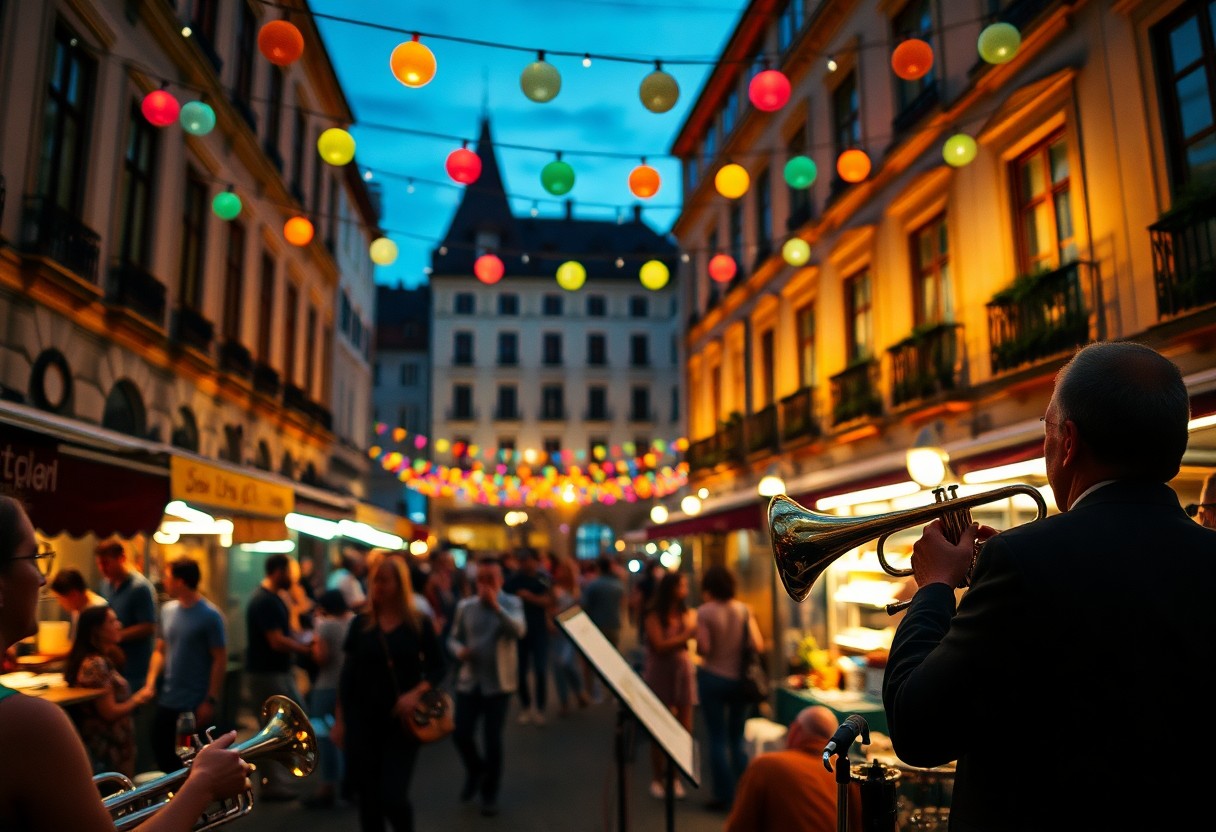You are about to explore into the fascinating world of the Master of European Jazz (MEJ), an innovative program designed to elevate your musical skills and artistic expression. This comprehensive course not only focuses on the technical aspects of jazz performance but also immerses you in European jazz traditions and contemporary practices. By participating in MEJ, you will connect with talented musicians, learn from experienced instructors, and gain invaluable insights into the vibrant European jazz scene, enhancing both your proficiency and creativity as a jazz artist.
Key Takeaways:
- Master of European Jazz (MEJ) is a prestigious program that fosters the development of musicianship and creativity within the jazz genre, focusing on European influences and styles.
- The program emphasizes collaboration and networking, providing students with opportunities to connect with industry professionals and other aspiring musicians across Europe.
- MEJ promotes a diverse curriculum that includes theory, performance, composition, and improvisation, ensuring a well-rounded education for students.
The Evolution of Jazz in Europe: Influences and Transformations
Jazz in Europe has undergone remarkable transformations since its inception, blending with local musical styles and cultural practices. The genre first arrived via American musicians in the early 20th century, sparking a unique synthesis with European folk and classical traditions. Over the decades, jazz evolved through various movements—such as the birth of free jazz in the 1960s and the integration of electronic elements—solidifying its status as a dynamic and influential genre that continues to shape musical landscapes across the continent.
Cultural Crossroads: How European Traditions Shaped Jazz
European jazz is a rich tapestry woven from diverse cultural threads that have influenced its sound and expression. Traditional European folk music, classical harmonies, and even local dialects often find their way into contemporary jazz compositions, creating a unique fusion. You can hear the distinct echoes of gypsy jazz, for example, which merges the improvisational spirit of jazz with the rhythms and melodies of Eastern European music, resulting in an artistic dialogue that transcends borders.
The Impact of American Jazz on European Musicians
American jazz has profoundly influenced European musicians, serving as both inspiration and catalyst for creativity. After World War II, a wave of American jazz artists toured Europe, showcasing styles like bebop and cool jazz that captivated local musicians. As you explore this phenomenon, you’ll find that European artists began to experiment with these sounds, often integrating them with traditional elements from their own cultures. Names like Michel Petrucciani and Jan Garbarek exemplify how musicians have blended American techniques with European sensibilities, resulting in a fresh and innovative jazz landscape.
Delving deeper into the impact of American jazz reveals a transformative exchange that shaped the musical identities of many European artists. The 1950s saw European saxophonists and trumpeters adopting American styles while infusing them with their cultural viewpoints. Iconic festivals and clubs, like the Montreux Jazz Festival in Switzerland or the Club de l’Age d’Or in Paris, became hotspots for collaboration and experimentation, where African American artists and European musicians performed together, bridging communities. This ongoing dialogue continues to inspire a rich convergence of sounds and ideas, making European jazz an ever-evolving genre situated at the intersection of tradition and innovation.

Mastering the Craft: Key Techniques and Styles
In European jazz, mastering the craft requires an understanding of various techniques and stylistic influences that shape the genre. From intricate chord progressions to subtle rhythmic shifts, every element plays a part in creating the unique sound that defines European jazz. By studying the contributions of prominent artists and the evolution of different styles, you can develop your own distinctive musical voice that resonates within this diverse landscape.
Signature Approaches: Notable Techniques in European Jazz
Each European jazz musician brings personal flair to their craft, showcasing notable techniques such as modal interchange, polyrhythms, and extensive use of dynamics. Artists like Jan Garbarek and Tigran Hamasyan incorporate these elements to explore new sonic territories, pushing the boundaries of traditional jazz and inviting you to expand your aural palette.
The Role of Improvisation: Finding Freedom Within Structure
Improvisation is central to European jazz, allowing you to express individuality while adhering to established frameworks. Musicians navigate complex chord changes and time signatures, finding moments of spontaneity that breathe life into their performances.
In European jazz, improvisation transcends mere technique; it weaves freely within structured compositions, providing a unique platform for self-expression. You can observe how artists approach improvisation across diverse subgenres, often blending elements from folkloric traditions to modernist tendencies. For instance, the spontaneous interactions between musicians during live performances lead to unexpected creative outcomes, showcasing each player’s distinct narrative while still maintaining cohesion within the ensemble. Engaging with this method not only enhances your technical abilities but also enriches your emotional connection to the music. Embrace this dynamic approach, as it sets the stage for your most authentic artistic expression.
Pioneering Voices: Iconic European Jazz Musicians
European jazz musicians have shaped the global landscape of jazz, bringing unique cultural influences and innovative styles to the genre. From the soulful melodies of Nina Simone to the avant-garde sounds of Ornette Coleman, these artists have combined traditional jazz with their local music traditions, creating a distinct European sound. Their contributions have not only enriched the jazz repertoire but also solidified Europe’s role as a vital hub for jazz exploration, leading to the development of diverse subgenres that continue to inspire future generations.
Trailblazers: Influential Figures Who Redefined Jazz
Jazz luminaries like Charles Mingus and Bill Evans have left an indelible mark on the genre, pioneering new techniques and approaches that transformed jazz into a more expressive and profound form of art. Their innovative compositions emphasized emotional depth and complex harmonies, encouraging musicians to explore their personal narratives through their instruments. As you dive deeper into their contributions, you’ll discover how their avant-garde ideas challenged conventions and inspired countless musicians across Europe and beyond.
Contemporary Innovators: The New Guard of European Jazz
The current crop of European jazz musicians stands out for their ability to blend various musical genres and experiment with traditional forms. Artists like Kamasi Washington and Yussef Dayes are pushing the boundaries, incorporating elements of hip-hop, electronic music, and even classical influences into their jazz compositions, creating fresh sounds that resonate with a modern audience.
In this dynamic landscape, new voices are emerging from cities across Europe, from London’s busy music scene to Berlin’s avant-garde clubs. You may find talents like saxophonist and composer Marius Neset, whose intricate compositions meld jazz with Nordic folk music, or the eclectic grooves of Brussels-based band GoGo Penguin. These contemporary innovators not only celebrate their jazz heritage but also challenge it, ensuring that the genre continues to evolve in exciting directions. Their fearless experimentation reflects the rich tapestry of cultural influences in Europe today, making the current jazz scene an exhilarating time to explore. Engaging with their music offers a chance to witness the intersection of tradition and innovation firsthand.

The Festival Circuit: Where Jazz Comes Alive
Experiencing jazz festivals across Europe offers an unparalleled opportunity to probe the vibrant world of live music. Each year, cities transform into thriving cultural hubs where improvisation and creativity flourish. You find yourself enveloped in the sounds of renowned artists and emerging talents, all coming together to celebrate the spirit of jazz. The festival circuit not only showcases a diverse range of styles but also fosters connections amongst musicians and enthusiasts alike, making it a cornerstone of the European jazz scene.
Celebrating Diversity: Major Jazz Festivals Across Europe
Major jazz festivals such as the Montreux Jazz Festival in Switzerland and the North Sea Jazz Festival in the Netherlands exemplify the rich tapestry of jazz music in Europe. Each festival presents an eclectic lineup featuring local and international artists, embracing genres from traditional to avant-garde. You can witness how these events promote cultural exchange and innovation, allowing artists to break free from conventions while audiences revel in the transformative power of live music.
The Artist Experience: What Musicians Gain from Live Performances
Performing live provides musicians with invaluable experiences that go beyond mere entertainment. The immediate feedback from the audience fuels creativity, inspiring improvisations and collaborations that can reshape their musical journey. As an artist, you learn to navigate different venues, adapt to diverse crowds, and refine your stage presence. Each performance presents an opportunity to connect deeply with listeners, creating a shared moment that transcends geographical boundaries.
Through live performances, you witness firsthand the impact of your music on an audience, which can be both exhilarating and humbling. Engaging with fans after a show enhances your sense of community, as fans express their appreciation and share personal connections to your work. Moreover, festivals often facilitate networking opportunities with fellow artists and industry professionals, potentially leading to collaborations or new career paths. This dynamic environment not only hones your craft but also helps you cultivate a deeper understanding of your artistic vision and place within the larger jazz narrative.
Bridging the Gap: Collaboration and Cross-Pollination
Through innovative collaborations and the blending of diverse musical backgrounds, the European jazz scene constantly evolves. This merging not only enriches the music itself but also fosters an atmosphere of inclusivity and experimentation. You’ll find musicians from various genres stepping outside their comfort zones to create fresh sounds that resonate with audiences worldwide. As they come together, the artists share ideas, techniques, and cultural perspectives, ultimately fostering a sense of unity within the jazz community and beyond.
Fusion Genres: The Intersection of Jazz with Other Musical Forms
Fusion genres have emerged as a testament to jazz’s adaptability and its ability to intertwine with other musical forms. You might see jazz harmonies meeting African rhythms or electronic elements being layered over traditional improvisation. The result is a rich tapestry of sound that challenges conventions and invites listeners into new auditory realms, reflecting the dynamic and transformative nature of modern music.
International Projects: Collaborations that Shape Global Jazz
International projects abound in today’s jazz landscape, showcasing the power of cross-cultural collaboration in shaping contemporary sounds. Musicians from Europe, Africa, Asia, and the Americas come together to create innovative works, exploring the common threads that connect their diverse heritages. These collaborations often result in albums and projects that not only offer a fresh sonic experience but also bring attention to social and cultural issues, further enriching the global jazz narrative.
One notable example is the European Jazz Network’s support for cross-border projects, enabling musicians to collaborate with artists from various backgrounds and traditions. Initiatives like “Jazz Across Borders” have facilitated exchanges that culminate in performances featuring a blend of European jazz styles with those from the African diaspora. With each concert, you witness how these artists draw on their individual experiences to craft a shared space where innovative ideas flourish and inspire new generations of jazz musicians. The influence of these collaborative efforts continues to redefine not just European jazz, but the global genre itself.
Final Words
Presently, as you explore the Master of European Jazz (MEJ) program, you are stepping into an enriching journey that intertwines academic rigor with practical artistry. This program not only hones your musical skills but also immerses you in diverse cultural influences that define European jazz. Engaging with renowned faculty and seasoned musicians, you will cultivate your unique voice while developing meaningful connections within the jazz community. Embrace this opportunity to deepen your expertise and make a lasting impact on the vibrant world of jazz.

